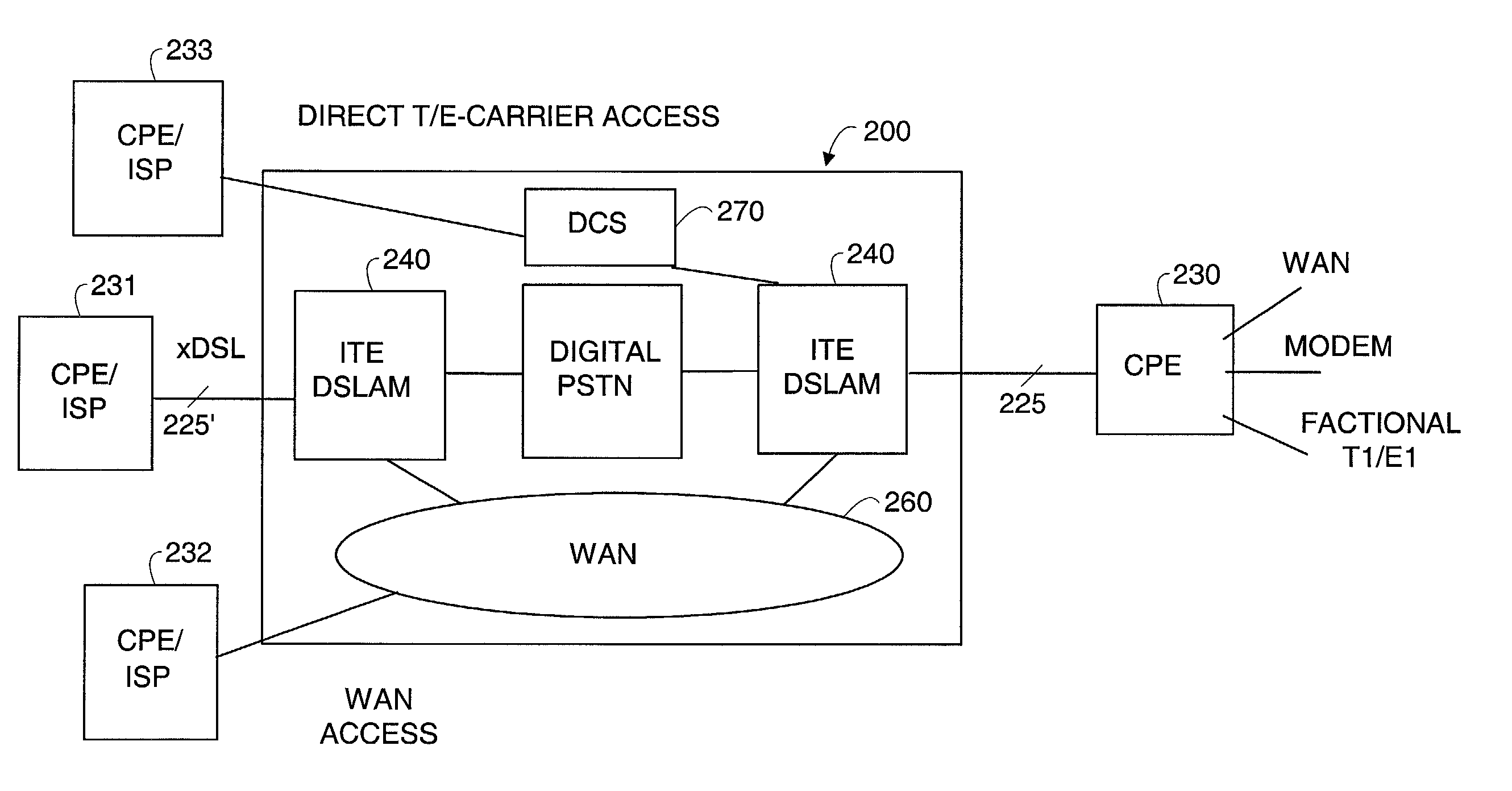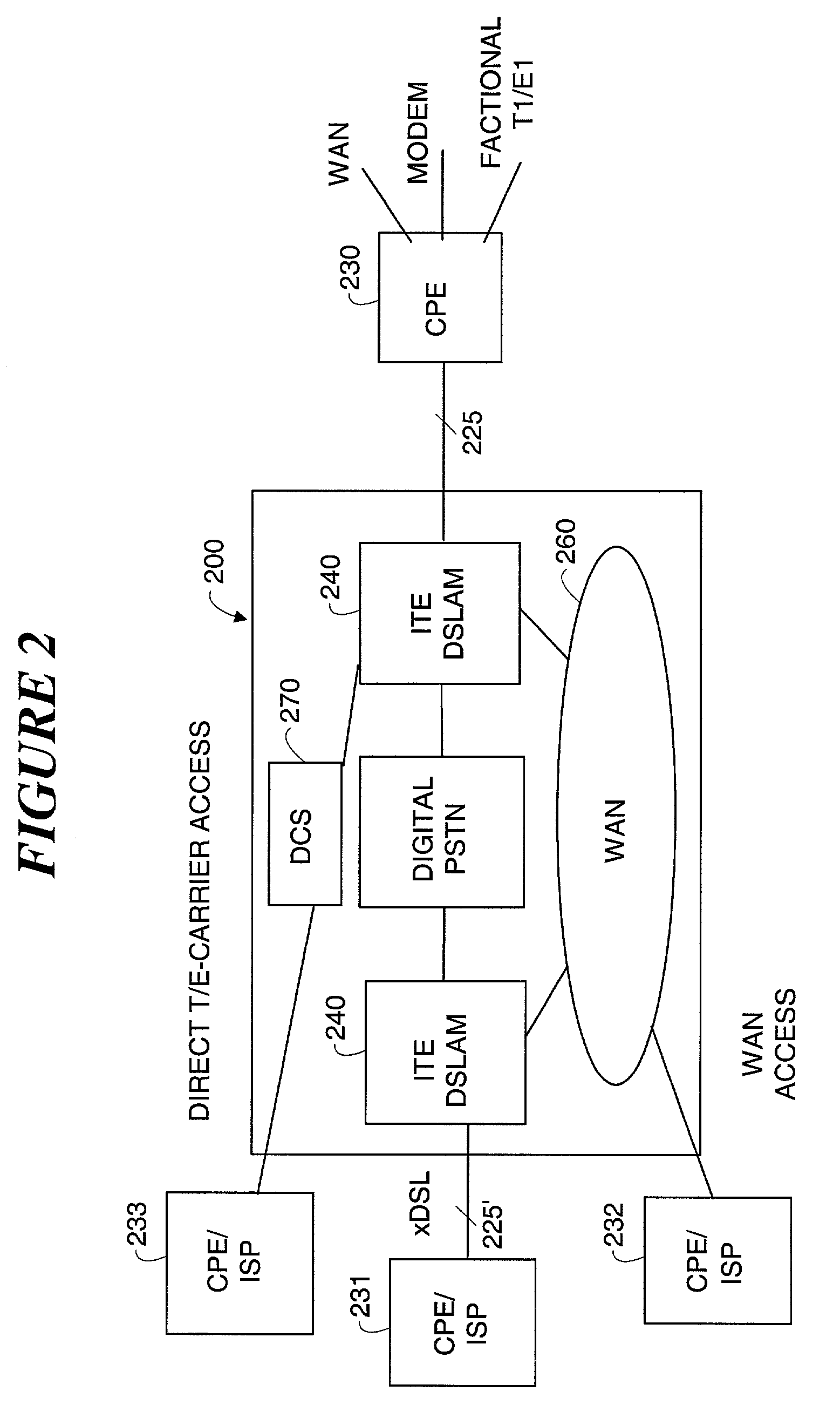Configurable digital subscriber loop access and end-to-end data and analog voice connection system
a technology of analog voice and digital subscriber loop, which is applied in the direction of data switching networks, multiplex communication, digital transmission, etc., can solve the problems of difficult to develop cost-effective and easy-to-install and-use solutions, data rate is not useful, and transfer time is too long, etc., to achieve the effect of easy allocation of the cost of routing data
- Summary
- Abstract
- Description
- Claims
- Application Information
AI Technical Summary
Benefits of technology
Problems solved by technology
Method used
Image
Examples
Embodiment Construction
Architecture of the Present Invention
[0033]FIG. 2 illustrates the new overall end-to-end DSL access switching network 200 proposed by the applicants. The primary highlight of the present invention is an improved DSLAM 240, which provides connection of a DSL line 225 to all data paths within the switching network 200, including PSTN 250, WAN 260, and various digital cross-connects (DCS) 270. Except where noted, DSL line 225, PSTN 250, WAN 260, and CPE / ISPs 230, 231, 232, 233 etc., correspond generally to their well-known counterparts already discussed in connection with FIGS. 1A and 1B.
[0034]As described herein, the circuitry of DSLAM 240 effectuates the following operational characteristics:[0035](1) A high speed DSL line 225 can be connected to PSTN 250, WAN 260, and DCS 270 at the same time by splitting its data stream according to user requirements and available connections;[0036](2) An end-to-end circuit-switching link between downstream CPE 230 and remote CPEs 231, 232, 233 can...
PUM
 Login to View More
Login to View More Abstract
Description
Claims
Application Information
 Login to View More
Login to View More - R&D
- Intellectual Property
- Life Sciences
- Materials
- Tech Scout
- Unparalleled Data Quality
- Higher Quality Content
- 60% Fewer Hallucinations
Browse by: Latest US Patents, China's latest patents, Technical Efficacy Thesaurus, Application Domain, Technology Topic, Popular Technical Reports.
© 2025 PatSnap. All rights reserved.Legal|Privacy policy|Modern Slavery Act Transparency Statement|Sitemap|About US| Contact US: help@patsnap.com



